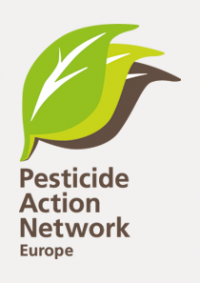The EU has banned the PFAS pesticide flufenacet because it’s harmful to human health and contaminates groundwater with its breakdown PFAS product, trifluoroacetic acid (TFA), a smaller but still toxic “forever chemical”. Yet, this dangerous pesticide will continue to be used on Europe’s crop fields for up to 18 months, according to the official EU decision. This is the maximum ‘grace’ period possible according to the EU Pesticides law, provided only for pesticides that are banned for reasons other than health or environmental protection. Which is clearly not the case for flufenacet. PAN Europe and Deutsche Umwelthilfe (DUH) have formally requested that the European Commission review and reverse this decision, urging an immediate end to the prolonged phase‑out.
In September 2024, EFSA concluded that flufenacet is an endocrine disruptor that alters thyroid function, potentially causing irreversible neurological ‘damage to unborn children’. It also found that flufenacet breaks down into TFA, which leaches into groundwater above the legal limit. These findings provided clear legal grounds for an immediate ban. In line with EU pesticide law, a decision to ban flufenacet was adopted in May 2025.
However, the decision allows Member States to keep authorisations in place until December 2025 and to continue the sales, distribution and use until December 2026, leading to a total grace period of 18 months. This goes against the Pesticide Law (Article 20), which requires that substances posing immediate concerns for human health or the environment be banned immediately. PAN Europe and Deutsche Umwelthilfe (DUH) have therefore formally requested that the European Commission review and reverse this decision under the Aarhus Regulation.
Angeliki Lysimachou, Head of Science and Policy at PAN Europe, comments: "People and the environment will remain exposed to this dangerous active substance for far longer than the EU law mandates. This is not only illogical, it is unlawful. If a pesticide product is unsafe, it should no longer be sold or used. This is especially the case for chemicals like flufenacet, which can harm the development of young children and pollute our water with TFA. With this objection, we want to secure a much shorter use-up period. This highly toxic pesticide must be off our fields before the next application season in autumn 2025."
The EU decision is also inconsistent with the way the Commission has handled other endocrine‑disrupting pesticides in the past. For all other substances banned because they meet the criteria for endocrine disruption, the grace periods granted were usually 12 months, and in one case only 9 months. These grace periods were already too long, given the proven harmful effects of these substances.
|
Active Substance |
Grace period granted |
| Mancozeb (also toxic for reproduction 1B) | 12 months |
| Clofentezine | 12 months |
| Benthiavalicarb | 12 months |
| Triflusulfuron-methyl (also groundwater threshold exceeded by a relevant metabolite) | 9 months |
| Metiram | 12 months |
| Dimethomorph (also toxic for reproduction 1B) | 12 months |
| Mepanipyrim | 12 months |
| Metribuzin | 12 months |
| Acibenzolar-S-methyl (withdrawn due to lack of data on ED) |
12 months |
The Commission is legally required to reply to the request for an internal review by the two organisations. If it decides to maintain the long grace period, PAN Europe and DUH are entitled to challenge the decision before the EU General Court.
Background:
Flufenacet is part of pesticide products such as Cadou SC, Elipris, and Tactic. It was one of the best-selling PFAS pesticide active ingredients in France and Germany, with 804 and 683 tons sold, respectively. It is used extensively in cereal cultivation and other crops. At the end of September 2024, the European Food Safety Authority (EFSA) found that flufenacet can have harmful effects on thyroid function. This raises significant health concerns. For pregnant women, particularly, alterations in thyroid metabolism may lead to irreversible neurological developmental disorders in fetuses.
The breakdown product of flufenacet is the “forever chemical” (PFAS), trifluoroacetic acid (TFA). According to the German Environmental Agency UBA, the use of flufenacet is the main cause of pesticide-related TFA entering the environment in agricultural areas. It leads to massive contamination of waterways all over Europe, as was shown in several reports by PAN Europe. There are no practical methods for removing TFA from the environment and drinking water.
Contact:
- Angeliki Lysimachou, Head of Science and Policy, +32 496 39 29 30, angeliki [at] pan-europe.info
- Jürgen Resch, Federal Managing Director, 0171 3649170, resch [at] duh.de
- PAN Europe Communication: Tjerk Dalhuisen, +31 6 14699126, tjerk [at] pan-europe.info
- DUH-Newsroom: +49 30 2400867-20, presse [at] duh.de
